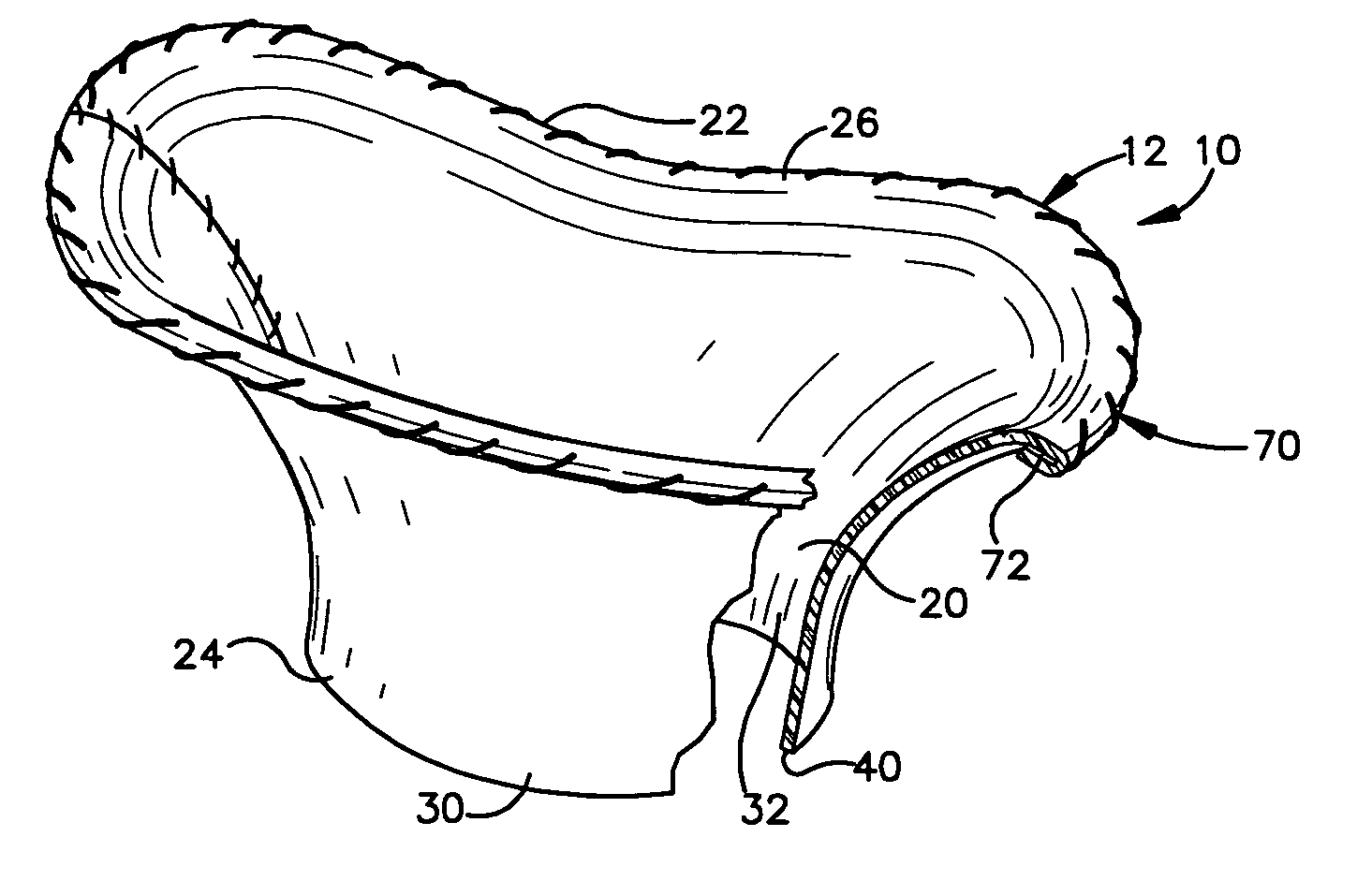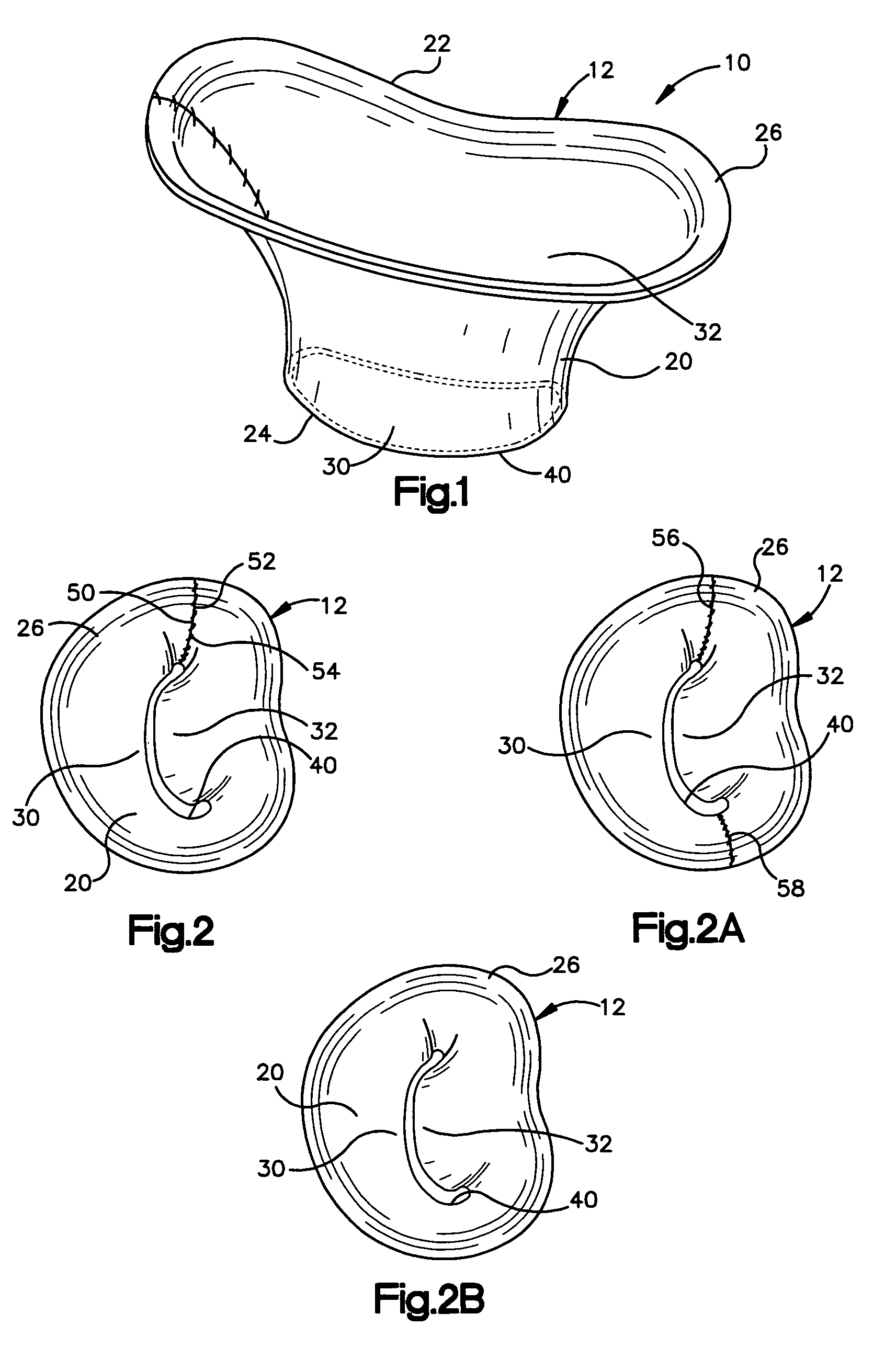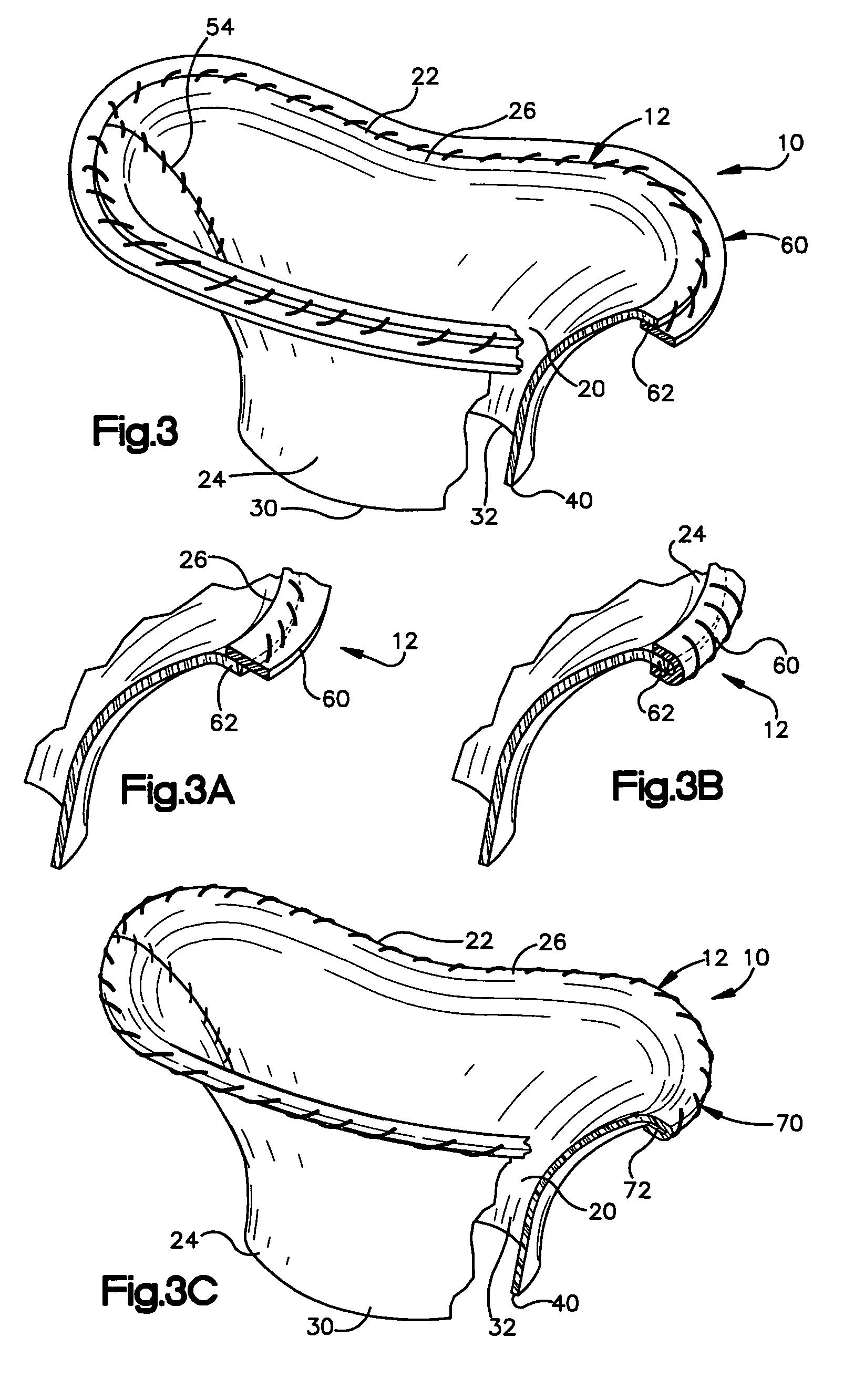Method and apparatus for replacing a mitral valve with a stentless bioprosthetic valve
a bioprosthetic valve and native technology, applied in the field of method and apparatus for replacing a native mitral valve with a stentless bioprosthetic valve, can solve the problems of many additional problems, high cardiac output imposed by a smaller size artificial valve, and the inability to perform mitral valve surgery. achieve the effect of preventing dilatation of the valve and maintaining continuity
- Summary
- Abstract
- Description
- Claims
- Application Information
AI Technical Summary
Benefits of technology
Problems solved by technology
Method used
Image
Examples
first embodiment
[0038]The present invention relates to a method and apparatus for replacing a native mitral valve with a stentless bioprosthetic valve. As representative of the present invention, FIG. 1 illustrates an apparatus 10 comprising a stentless bioprosthetic valve 12 for replacing a native mitral valve 14 (FIG. 4) in accordance with a
[0039]The bioprosthetic valve 12 shown in FIG. 1 is made from one or more pieces of biocompatible material formed into a bi-leaflet conduit 20 having dimensions that correspond to the dimensions of the native mitral valve 14. The conduit 20 has a proximal end 22 and a distal end 24. The proximal end 22 defines a first annulus 26 for suturing to the valve annulus of the native mitral valve 14, as described further below.
[0040]The conduit 20 further includes first and second leaflets 30 and 32 (FIG. 2) that mimic the three-dimensional anatomical shape of the anterior and posterior leaflets 34 and 36 (FIG. 4), respectively, of the native mitral valve 14. The firs...
second embodiment
[0059]FIGS. 8–10 illustrate an apparatus 10′ comprising a stentless bioprosthetic valve 12′ in accordance with the present invention in which the bioprosthetic valve comprises a homograft mitral valve. In FIGS. 8–10, reference numbers that are the same as those used in FIGS. 1–7 indicate structure that is the same as described above for the previous embodiment, while reference numbers that have apostrophe (′) indicate similar, but not identical, structure.
[0060]In accordance with the second embodiment, the homograft valve 12′ to be implanted must be harvested. To harvest the valve 12′, the left atrium of the donor heart is opened and the mitral valve annulus 82, the leaflets 30′ and 32′, and the subvalvular tissues (the chordae tendineae 90 and the papillary muscles 100) are anatomically evaluated. The valve 12′, and in particular the heights of the leaflets 30′ and 32′, are measured.
[0061]The left ventricle is then opened and the entire valve 12′ is excised or removed by incision o...
PUM
 Login to View More
Login to View More Abstract
Description
Claims
Application Information
 Login to View More
Login to View More - R&D
- Intellectual Property
- Life Sciences
- Materials
- Tech Scout
- Unparalleled Data Quality
- Higher Quality Content
- 60% Fewer Hallucinations
Browse by: Latest US Patents, China's latest patents, Technical Efficacy Thesaurus, Application Domain, Technology Topic, Popular Technical Reports.
© 2025 PatSnap. All rights reserved.Legal|Privacy policy|Modern Slavery Act Transparency Statement|Sitemap|About US| Contact US: help@patsnap.com



